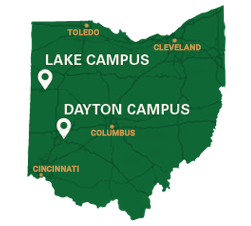Undergraduate Program Proposal Process
On this page:
Process Overview
The process outlined below will be utilized for all new baccalaureate programs, associate programs, undergraduate certificates, minors, and micro-credentials. Concentrations will not be required to submit through the process.
Initiator completes Undergraduate Program Concept Form
Upon submission, an initial meeting will be scheduled between program proposer, their college leadership, the Registrar’s Office, the Provost’s Office, the Office of Finance. The purpose of this meeting will be to (1) review requirements for program creation, (2) manage the expectations of timelines, and (3) review institution, state, and accreditation requirements
Initiator enters information within Curriculog
- Ohio Department of Higher Education requires the following for program proposals. Upon submission of the proposal, ensure the following are prepared:
- Results of recent accreditation reviews
- Course syllabi
- Organizational Chart
- Faculty CVs
- Faculty/student handbooks (or link)
- Current catalog (or link)
- Needs assessment/market analysis to determine a need for the program
Resources for assistance in completing Step 2:
- Registrar’s Office—assistance with Curriculog entry
- Provost’s Office
- Vice Provost of Assessment and Accreditation—assistance with formulating program learning outcomes; aligning program learning outcomes with curricular materials, course outcomes and assessments
- Vice Provost of Academic Affairs—curriculum questions; curricular mapping, assistance with the ODHE proposal template, etc.
Office of the Provost submits Initial Inquiry (PDF) form to the Ohio Department of Higher Education
Program proposal follows review process in Curriculog
- Undergraduate Department or Program Curriculum Committee
- Provost, ensures that step 1 was completed and that originator is aware of the process
- Registrar confirms the required information is submitted appropriately
- Department Curriculum Committee
- Assessment Review & Program Verification
- Transferability
- Program Resources – reviews financial related information and completes the Financial Impact Statement
- Department Chair / Program Director
- College Undergraduate Curriculum Committee
- Dean
- University Undergraduate Curriculum Committee
- Faculty Senate
- Provost
- Board of Trustees
- ODHE
- HLC
- Registrar*
*Notifications of the approved program are sent to 1) Financial Aid, which determines if the program is eligible for Title IV funding, 2) Enrollment Management – confirms the application process for new program, 3) Marketing – ensures applicable marketing sources are updated to reflect the new program (i.e. webpage), 4) Institutional Research – confirms that reporting needs are updated with new program.
Program is presented to the Board of Trustees after step 13 within Curriculog is complete
Office of the Provost submits Program Proposal & Financial Impact Statement to the Ohio Department of Higher Education, if required.
Ohio Department of Higher Education Guidelines & Procedures for Academic Program Review
Office of the Provost submits Program Proposal to the Higher Learning Commission
Upon approval by the Higher Learning Commission, the Registrar’s Office submits approval in Curriculog. The Registrar’s Office will finalize the program approval process and the new program can begin marketing and admission process.
Curriculog sends a notification email of the approval program to the Office of Institutional Research, Marketing, Communications and other key offices.
Resources
Frequently Asked Questions
-
Can a concentration within a major have a different CIP code?
Concentrations should have the same CIP Code as the major under which the concentration is aligned. Since concentrations must make up at least 50% of the major coursework (ODHE Guidelines, p. 54), if 50% or more of the major coursework better aligns under a different CIP Code, we would expect a new major to be created.
-
Can I add a concentration to an existing program rather than establish a new program?
A concentration must have the same CIP code and include a minimum of 50% of the curriculum within the major. Learning outcomes for the program and concentration should be consistent; a concentration should have minimal additional outcomes than the program to which it is added.
-
When can students apply for the program?
- Continuing Students: Can students that are continuing apply earlier than new students? Yes, once the code is approved and available, students can declare the new major (only if they are continuing students)
- New Students: Program will be available once the application cycle begins for new students. Ensures that print material reflects programs available for students to apply for.
- This may be later than is available for continuing students
-
Can a student declare a major at the time of application even if the program will be terminated and replaced with a new program? (Example: Liberal Studies will be terminated and IDS will be the updated/new major)
Students can apply for a major that is currently promoted and then submit the Request to Change Major to declare to the newly approved program.
-
Once enrolled, how does a student enroll in the new program?
Incoming new students who see the new program and would like to declare that major may do so upon enrollment.

